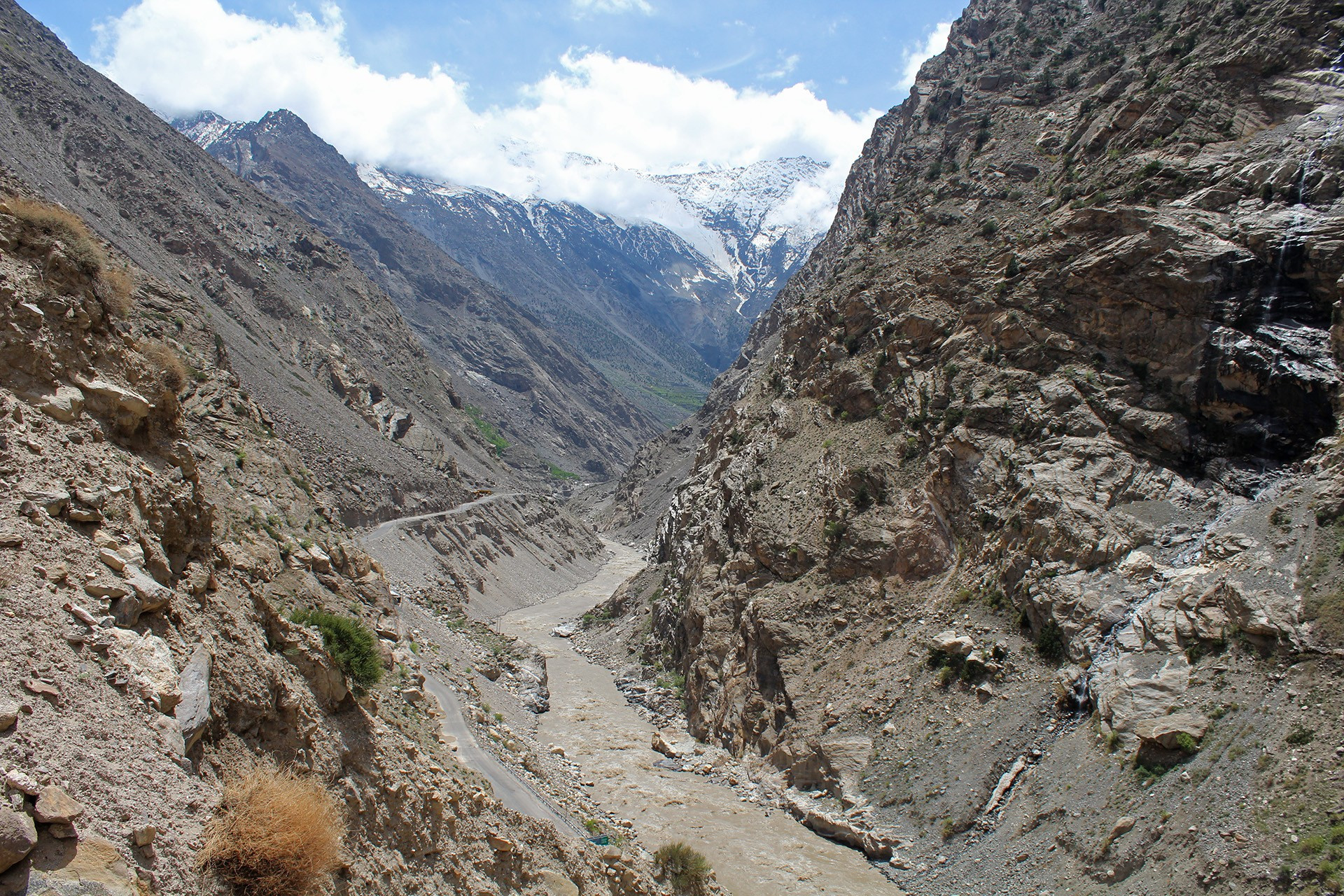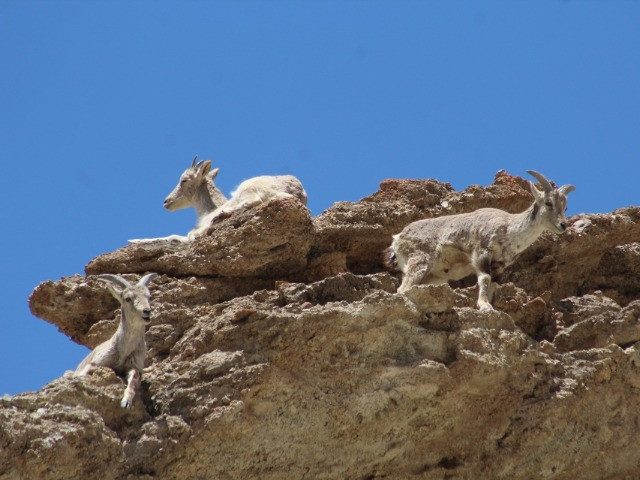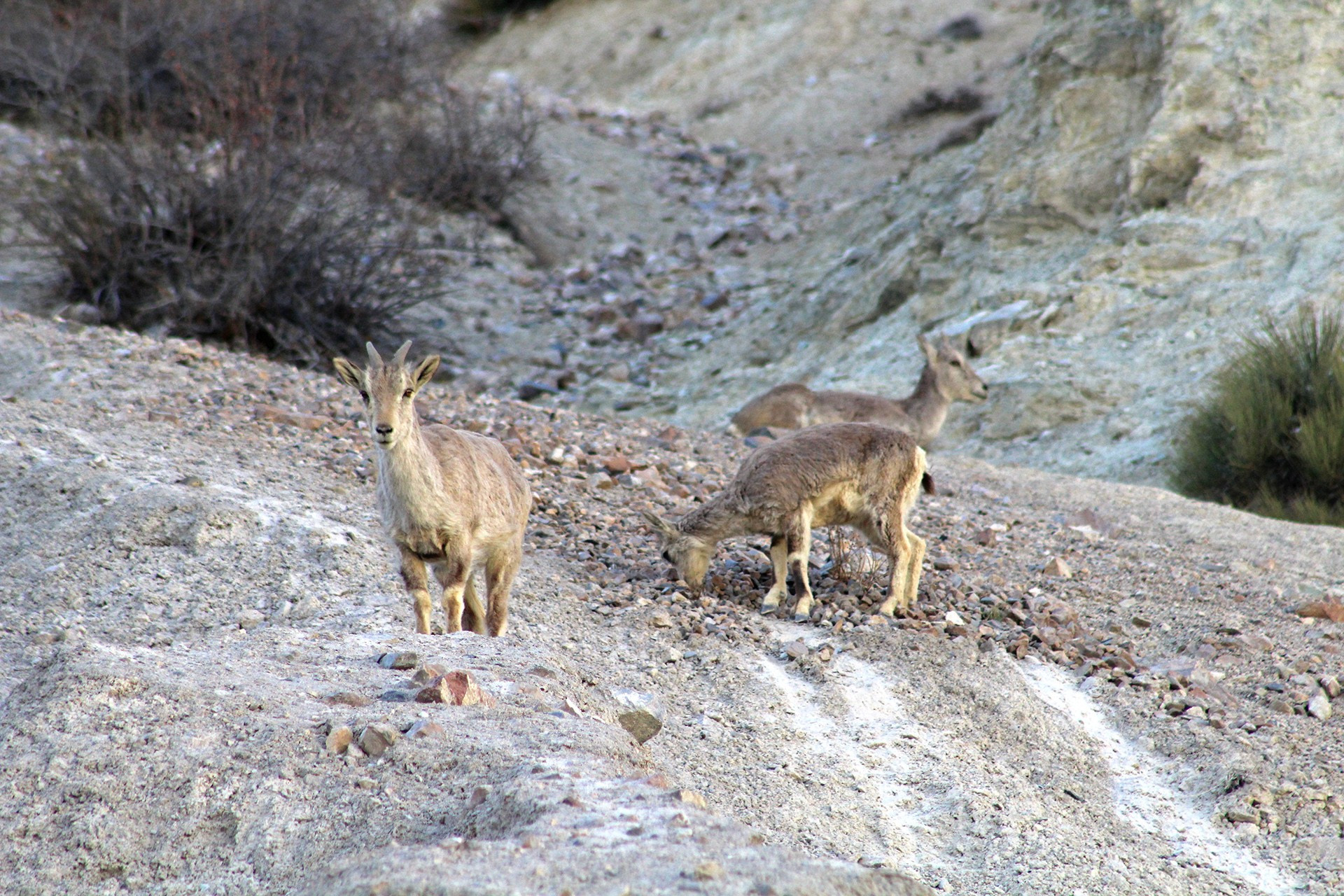The ghost of the mountains, the Snow Leopard (Panthera uncia) is an enigmatic species to study. Their high altitude home, marked by precipitous terrain and hostile temperatures, makes it especially challenging to learn more about this endangered feline. Snow Leopards are thought to inhabit around two million sq.km. of area across the Central and South Asian mountains – the Indian Himalaya is of their most important abodes.
The Global Snow Leopard & Ecosystem Protection Program (GSLEP), an effort to unite Snow Leopard range country governments, non-governmental and inter-governmental organisations, local communities, and the private sector for Snow Leopard conservation, estimates that the Snow Leopard population is between 3,920 to 6,000. The uncertainty is mainly due to knowledge gaps from large and rather inaccessible areas across the species’ range.
Consider this: all our knowledge about Snow Leopards comes from under 2 per cent of this immense area, the majority of which is a protected area. But only a fraction of the protected areas across the Snow Leopard’s global range are large enough to support more than one Snow Leopard – studies have shown that, on average, a Snow Leopard needs around 125-250sq.km. of area to survive!
To better understand and conserve the elusive Snow Leopard, we will have to move beyond the minuscule areas that our work has been concentrated in so far, into newer non-protected areas, which are much larger and perhaps hold more Snow Leopards.
After all, across most of the Snow Leopard’s range, the cats share space and resources with large numbers of agro-pastoralist communities that are dependent on the mountain ecosystem for resources such as pasture for their livestock. Unlike what most people tend to assume, Snow Leopards rarely live in pristine habitats, away from the sight and impact of humans. Man and animal often come into conflict: Snow Leopards opportunistically predate livestock, and people, struck by the economic and emotional cost of losing their herds, retaliate by killing Snow Leopards. One of those non-protected areas is Upper Kinnaur.
With its deep, precipitous gorges, cut into by the gushing Sutlej and Pare-Chu rivers, Upper Kinnaur is a unique landscape. This 3,500sq.km. area in Himachal Pradesh is largely non-protected and highly human-dominated. The local communities here are mostly engaged in livestock herding and commercial apple and pea cultivation. We wanted to know: does this landscape support a viable population of endangered snow leopards? So between March and May this year, Nature Conservation Foundation (NCF) in collaboration with the Himachal Pradesh Forest Department conducted a Snow Leopard and wild prey survey in Upper Kinnaur. The idea was to assess ground realities, and the possibility of long-term conservation commitments, while remaining sensitive to the communities that call these areas home.
We set up 31 camera traps over a 500sq.km. area across Upper Kinnaur to assess the number of Snow Leopards there. The entire landscape was gridded with 4km x 4km grids. Then, within each grid, the camera trap location was meticulously chosen, after looking for signs like their pug marks, scent marks (which only a trained human nose can detect!) or scraps (the foot-markings these cats make to mark territories). A team of six took nearly 15 days to place all the cameras where we wanted them. This work was largely possible because of the support from the Himachal Pradesh Forest Department.
Little did our team expect that while putting cameras out for this elusive cat, they would spot one in the flesh! Our field colleagues, Rinchen Tobge, Tandup Chhering, Tenzin Thukten and Kesang Chunit, who have been camera trapping for nearly eight years now, were lucky enough to spot this individual, near Pooh village. It had been feeding on a Blue Sheep. Was this a sign of better things to come?
Even in the most remote, frigid areas of Upper Kinnaur, there are people living in the mountainscape. Over 10,000 people call the high altitudes of Upper Kinnaur their home. Pictured above is Hango village in the Hangrang Valley. Notice the agricultural fields in the background, where people primarily grow apples and peas. These crops are then sold to middlemen who take them to places like Chandigarh and Delhi to sell commercially. This juxtaposition of communities and wilderness is a reality across much of Snow Leopard’s global range, especially in the high-elevation Himalaya.
For this three-month-long project, we set up base at Pooh, the most centrally located and most populous village in the Upper Sutlej Valley. A comprehensive study for Snow Leopards includes a population estimation of Snow Leopards and their prey, a livestock census of the area, and the quantification of livestock depredation by Snow Leopards (that is, how many livestock are killed by them, and how often). We tried to understand other threats to Snow Leopards such as poaching and retaliatory killing.
When surveying a completely new area, it is important to know which wildlife species exist there. It is logistically impossible for us to see each and every species, and our camera traps are set up specifically for Snow Leopards, so to obtain this information, we conduct interviews with locals. Local people are the custodians of precious and vast traditional ecological knowledge of the places they inhabit. We showed people like Karmaji of Pooh village, photos of different species and asked if they knew them or had seen them in the region. This not only provided information but also resulted in us making many friends.
One of the many perks of working in the beautiful high altitudes is the even more beautiful and mesmerising starry night skies. While conducting interviews with the locals in the picturesque Shalkar village of Upper Hangrang Valley, I didn’t realise how much time had passed. Eventually, after a final julley (an all-purpose greeting in the local Spitian language) I made my way back to the home of my generous host (whom I had befriended just that very morning!). On our way to his house, we couldn’t help but be awed by the sight of the glittering sky, as the clock ticked close to midnight.
You may also like to read
The road less travelled is often the one that leads to the most exciting findings. I was told by a tea vendor at Nako village that an interesting story would be revealed to me if I made my way to the tiny village of Tashigang, near the Tibetan border. Just to get to the remote village meant walking for nearly six hours across the treacherous mountainside, without a soul in sight. It is humbling to realise that many communities across the Indian trans-Himalaya, commute like this every day of their life, be it to graze livestock or to get the supplies they need. I decided to follow the story to Tashigang.
In Tashigang, I was introduced to an ageing Gulabji, whose life changed forever in the summer of 2016. He woke up one morning and headed over to his corral to let his 53 sheep and goat out to graze. “What I saw shocks me even today. Two chankos (Snow Leopard in the local language) were staring at me with blood-red faces. They had killed 45 out of the 53 livestock. It was carnage.”
Gulabji’s only emotional and economic support was his livestock. His children and their families had long since left for lower Himachal in search of jobs. Every once in a while, he would sell one of the herd to earn enough to feed himself. He would also use their dung as fertiliser for the food and cash crops he and other villagers cultivated. “In an instant, both the chankos walked away and all I saw was death in front of my eyes.” These depredation events happen when Snow Leopards live in proximity to humans. Now, without any means to eke out a livelihood, Gulabji survives solely on the generosity of his fellow villagers, who occasionally supply rations for him to use.
Both the terrain and weather along Upper Kinnaur are unrelenting. The temperature in winter can plunge down to -25°C; in summer, it can reach 30°C. A massive snowstorm in the middle of April resulted in one section of the road near Malling village of Hangrang Valley being completely swept away. This is a frequent reality along this dangerous roadway, which is the only way for people to commute from Upper Kinnaur to Spiti or Lower Kinnaur. The real heroes in these circumstances are the Border Road Organisation labourers, pictured here, who work in some of the toughest and most dangerous circumstances to repair roads and restore connectivity. Our team was stranded for nearly 15 days until the breakage was fixed. Roads can potentially fragment habitats of wildlife as well. However, the impact of infrastructural developments such as roads on wildlife movement in this area is unknown.
The Lammergeier or Bearded Vulture (Gypaetus barbatus) was an ever-present companion during my time in Upper Kinnaur. These raptors are rather inquisitive birds, coming close to inspect me almost every time I would sit down to rest. They are said to defend huge territories in which pairs breed and feed. Between 70-90 per cent of this magnificent bird’s diet comes from bone, mostly of dead wild and domestic ungulates in this region. They throw the bigger bones from a height onto rocks in order to break them and feed on the marrow and the small pieces.
It’s not just the big, majestic and rare species that are important to ensure the health of an ecosystem. Smaller and relatively more common species such as this Rock Bunting (Emberiza cia) have their own important roles to play in this landscape. Their diet mainly consists of insects and seeds, hence they are key in maintaining insect populations, and dispersing and pollinating some of the plants that characterise the stark, yet important vegetation in the trans-Himalaya.
Upper Kinnaur is a highly heterogeneous region – the local people follow a range of religions and beliefs such as Hinduism, Buddhism, Shamanism and animistic belief systems. Often, Ibex horns are used as offerings to local deities. Horns of older males are preferred as they are thought to be blessed by the deities. These horns are often collected in the winter when ageing Ibex die naturally.
The impacts of climate change are said to hit the high altitude of the Himalaya disproportionately more than most other ecosystems. Regions like Upper Kinnaur are facing the effects already. In recent years, erratic snowfall has led to a decrease in pasture productivity in an already low-productivity system. This is affecting the health of livestock in a region dominated by agro-pastoralist communities. Herders are venturing further and higher in search of pasture, which often results in their livestock coming into proximity and thus competing with wild prey. This already frustrating situation is confounded by the occasional depredation of livestock by Snow Leopards.
Upper Kinnaur is home to two of the preferred prey species of the Snow Leopard; the Blue Sheep and Asiatic Ibex. Our extensive ungulate surveys revealed a rather healthy population of Snow Leopard prey in the region – we found nearly 450 individuals of Asiatic Ibex and Blue Sheep inhabiting a 650sq.km. area. Blue Sheep are generally found near alpine pastures in more undulating slopes, whereas Asiatic Ibex are found in more rugged terrain near cliffs. Considering that Snow Leopards are known to kill nearly 45 ungulates (including wild and domestic) every year, these ungulate numbers seem good. However, Upper Kinnaur has nearly 45 times more livestock than wild ungulates. This is particularly worrying as we know livestock can out-compete their wild cousins for forage and degrade the already fragile pastures.
Upon retrieving the cameras, we were surprised to see that 10 of the 31 camera traps had captured photographs of Snow Leopards. In total, we obtained over a hundred images of Snow Leopards. So this cleared any remaining doubts: even relatively human-dominated, non-protected areas can harbour important populations of Snow Leopards. Additionally, 11 other mammal species were captured on our camera, including the rare Himalayan Brown Bear.
The project in Upper Kinnaur was a tough experience for all of us. Nonetheless, it is motivating to know that even in a landscape dominated by economic activities, there exists a seemingly healthy population of Snow Leopards and their prey. However, the reality of livestock depredation, its consequent socio-economic cost on communities and the subsequent retaliatory killing of Snow Leopards can’t be overlooked. Strategies such as predator-proofing livestock corrals and setting up community-based livestock insurance policies are some ways in which conflict can be mitigated without moving communities out and creating protected areas. For peaceful coexistence, perhaps Snow Leopard conservation needs a land-sharing approach with local communities.





















